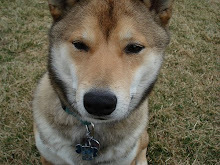Once your dog understands that click equates to treat, you should always be sure to provide some sort of treat or praise after using the clicker; to reward your dog. The clicker's roots lie deep in Positive Reinforcement. Positive Reinforcement is a very excellent way to train a dog. The reason being is that dogs are social creatures and they love their family. I can't exactly say they want to please -- not all dogs were born to please, but most dogs like to listen to their owners when they ask something of them.
When you praise an animal for doing something that you ask of them, then it makes them happy. You are helping make a connection for your dog to understand. Dog's don't speak our language and we don't speak theirs -- but as the superior intellect in the relationship, it is our job to be able to help aid our animals in having a good understanding and smooth connection. If you punish your dog for doing something wrong, you are severing these bonds.
Now, i'm not saying punishing is a bad thing. Sometimes dogs need a time out, but dogs aren't humans. Dogs forget what mistake they've made -- and so they'll associate punishment with the person who punished them. And this is when a dog starts to distrust its' owners.
